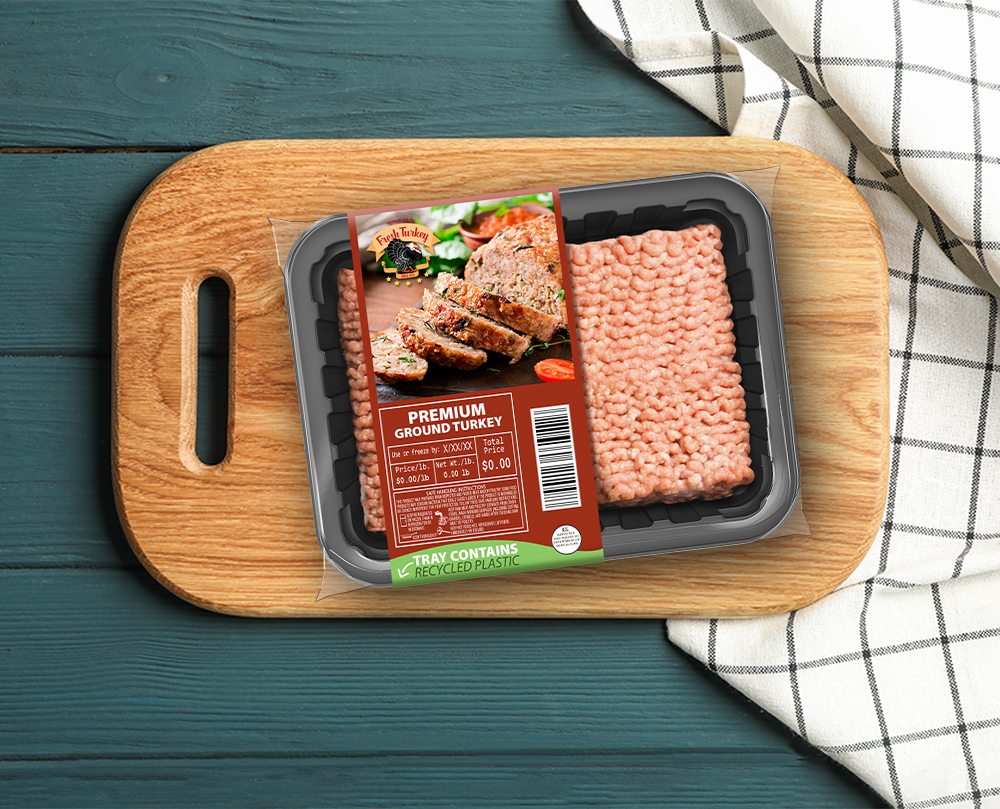Sustainable Protein Packaging Starts With Trays
Sealed Air emphasizes the importance of sustainable packaging strategies for protein products in light of increasing regulations and consumer preferences. Key points include:
- Utilization of recycled and alternative materials to reduce traditional plastic use.
- Maintaining operational efficiency while adopting sustainable options.
- Aligning packaging choices with consumer preferences for non-plastic solutions.
- Enhancing brand loyalty through high-quality packaging design.
- Proactively addressing regulatory changes affecting packaging materials.
Sealed Air positions itself as a comprehensive partner for businesses aiming to implement effective sustainability solutions across their packaging lifecycle.
- Emphasis on sustainability aligns with current market trends and regulatory demands.
- Innovative packaging solutions like trays without absorbent pads and plant-based options signal a commitment to reducing plastic usage.
- Consumer preference for sustainable packaging creates opportunities for differentiation and brand loyalty.
- Proactive approach to regulatory changes positions Sealed Air as a forward-thinking leader in the industry.
- Transitioning to sustainable options may lead to initial disruptions in operational efficiency.
- High capital investment might be required for adopting new sustainable packaging solutions.
NORTHAMPTON, MA / ACCESSWIRE / March 20, 2023 / Sealed Air:
Plastic taxes, regulatory bans of expanded polystyrene (EPS) foam, and environmental pledges are keeping sustainability attributes such as recyclability, biodegradability, compostability, and plastic reduction top of mind for food processors and retailers. At the same time, more and more consumers are approaching the proteins case with a growing interest in products that boast eco-friendly packaging and processing.
Within a complex protein category with many packaging options and formats, creating differentiation on shelf while staying convenient and cost competitive is a real challenge. As an innovator in protein packaging, Sealed Air believes there are five must-haves in a sustainable protein packaging strategy-and it starts with trays.
Evaluate a Range of Sustainable Materials
Recycled plastic content has been used in food packaging trays and bottom webs for many years, and developments such as these have inspired processors and retailers to explore even more sustainable packaging options. Solutions such as trays that do not require absorbent pads, or plant-based options are great ways to reduce the use of traditional plastic. The most progressive operations incorporate fiber or bio-based materials into their packaging, creating a potentially recyclable, biodegradable, and/or compostable pack.
Don't Sacrifice Operational Efficiency
Shifting to more sustainable packaging doesn't have to disrupt operational efficiency. When building a packaging strategy, you need to strike a balance between performance needs, operational and environmental impact, and cost. For example, some applications may reduce plastic or feature more renewable options, but negatively impact packaging performance and increase rework levels, or require a large capital investment. That's why it's critical to select solutions that are fit-for-use in your existing operations.
Consider Consumer Preference
Renewable packaging continues to gain momentum, driven by rising consumer perceptions for non-plastic, "sustainable" options or packing that uses less plastic overall. Trays that incorporate alternative materials have a higher sustainability perception among consumers than plastic trays. When rated as more sustainable, there becomes a greater likelihood that consumers will follow end-of-life recommendations to properly dispose of the trays and are happier knowing that their waste is not causing negative environmental impacts.
Build Your Brand
High quality design and printing on packaging helps to build brand loyalty and recognition. Trays and bottom webs have long been regarded for their branding and merchandising capabilities. Showcasing your environmental commitment on-pack is an excellent way to catch the attention of a growing number of sustainable-minded shoppers and stakeholders. This could entail messaging on packaging materials, disposal instructions, or even a QR code directing the consumer to your full sustainable packaging story.
Stay Ahead of Regulations
Like many industries, regulatory headwinds play a key role in global, industry-wide shifts. In this case, a growing ban on EPS foam and plastic tax legislation is forcing some processers and retailers to rethink the future of their protein packaging. In this rapidly changing environment, failure to address EPS or find a suitable replacement early could leave you without a packaging solution, and possibly without customers.
Total-Solutions Provider
Your sustainable packaging strategy should be just that-sustainable. And while there are many ways to incorporate sustainability into your packaging operations, it's critical to work with a partner that can deliver market-ready packaging solutions that prevent waste, enable circularity, and reduce climate impacts across the packaging lifecycle from sourcing and manufacturing, to design, transport, and recovery. For processors and retailers seeking clear value in sustainability solutions, Sealed Air is the total-solutions partner whose unique view across the value chain enables a comprehensive approach to advance your sustainability and business goals.
Story originally published on SealedAir.com.

View additional multimedia and more ESG storytelling from Sealed Air on 3blmedia.com.
Contact Info:
Spokesperson: Sealed Air
Website: https://www.3blmedia.com/profiles/sealed-air
Email: info@3blmedia.com
SOURCE: Sealed Air
View source version on accesswire.com:
https://www.accesswire.com/744644/Sustainable-Protein-Packaging-Starts-With-Trays
FAQ
What are Sealed Air's sustainable packaging initiatives for protein products?
How does Sealed Air address consumer preferences in packaging?
What regulatory factors influence Sealed Air's packaging strategies?
What are the benefits of Sealed Air’s protein packaging solutions?







